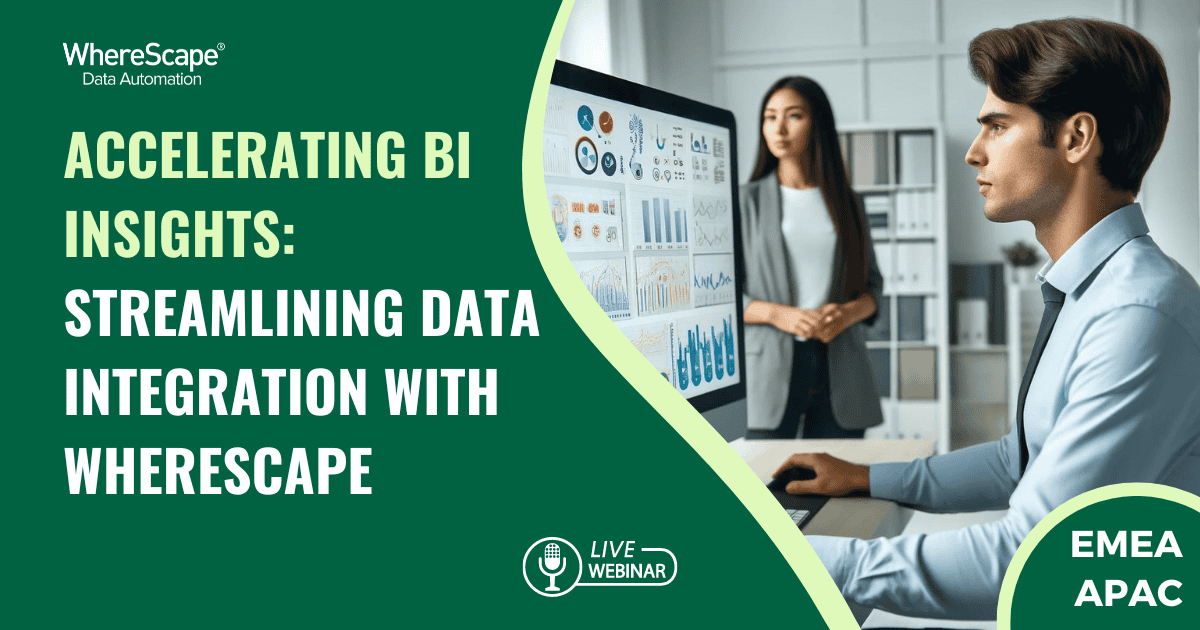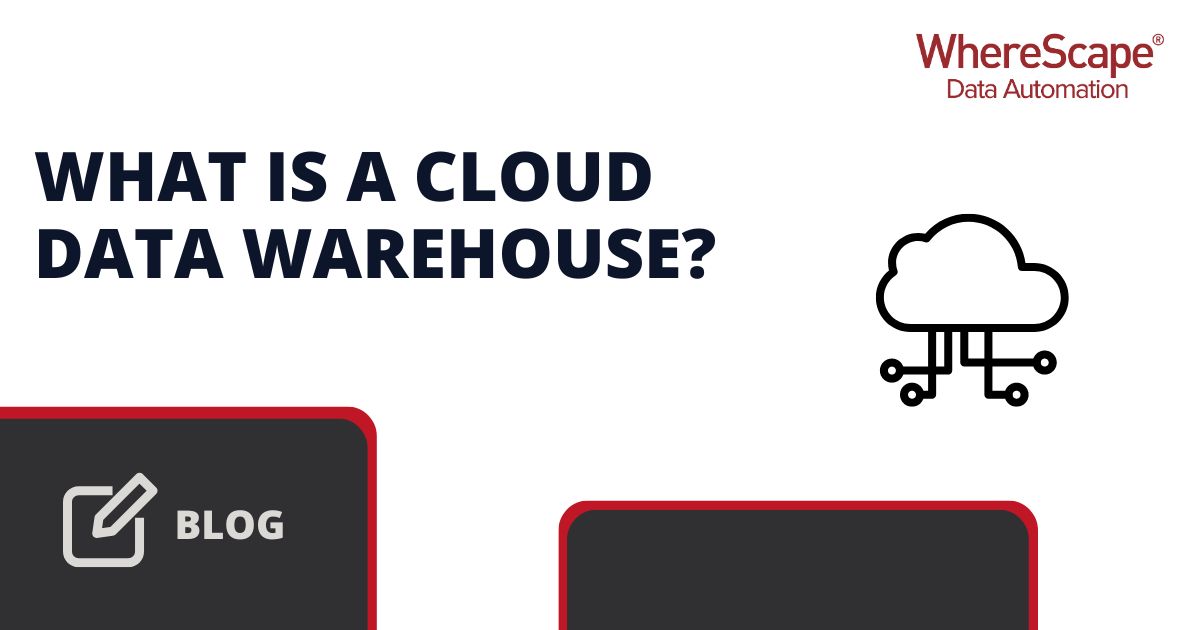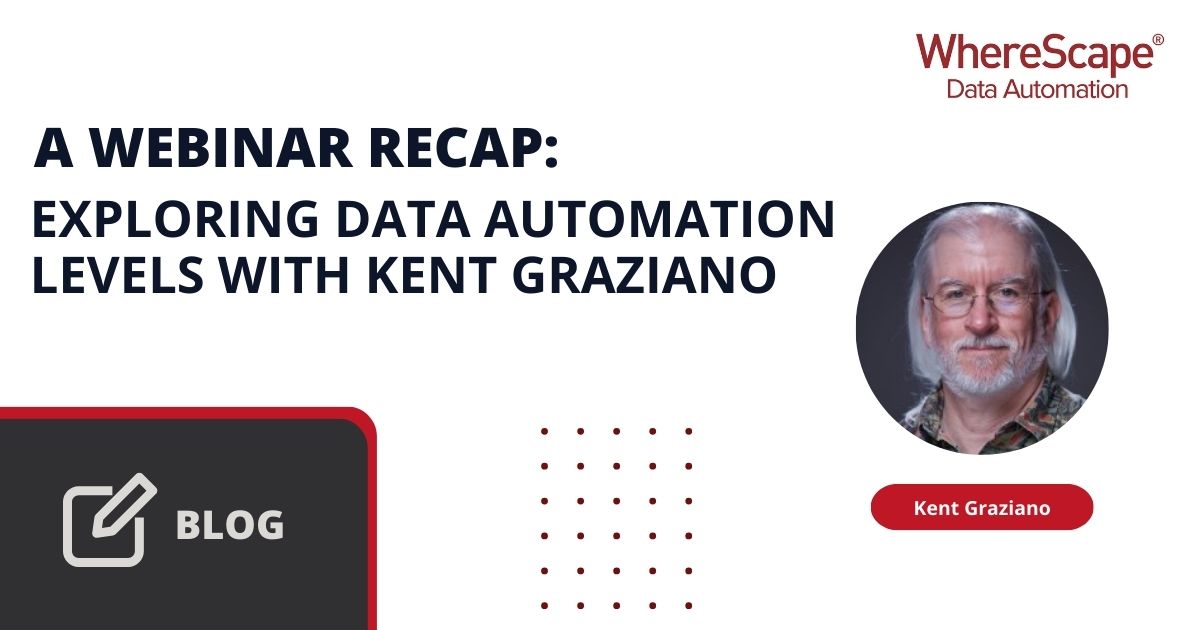Business intelligence (BI) insights are crucial...
Maximizing Data Potential: Microsoft Fabric and WhereScape in Harmony
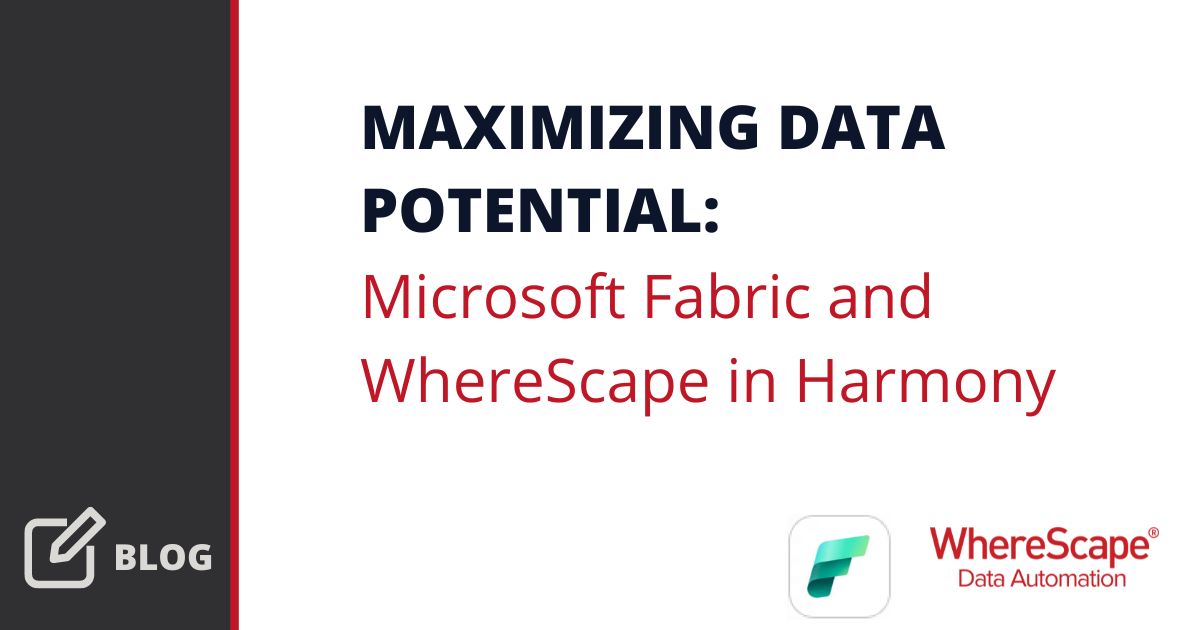

Forget gold. Forget oil. We are living in an era where data is our most precious commodity. As organizations strive for deeper insights into how their products perform, how their brand is perceived, and how customers behave, the need for stronger and more efficient analytical tools has never been greater.
That’s why you have likely seen an advertisement for Microsoft’s newest product, Microsoft Fabric. One of the company’s biggest launches in years, Microsoft Fabric is the answer to the market’s ‘call for help’ for improved, user-friendly data analytics. Introduced a few short months ago in November 2023, Microsoft Fabric is already making waves in the data management industry, and here at WhereScape, we understand the importance of this new platform. That’s why we’ve been involved from the start.
Since Microsoft Fabric’s inception, we’ve been hard at work developing integrations to ensure that not only are our automation tools unified with the platform, but that efficiencies are implemented to create an even better, synergistic effect when using the two tools together. Let’s delve deeper into the world of Microsoft Fabric and WhereScape, exploring how their features will propel your data management to a whole new level.
A Closer Look into Microsoft Fabric

At its core, Microsoft Fabric offers a comprehensive platform that seamlessly integrates various Microsoft services. From data lakes to data engineering and data integration, Fabric consolidates these functionalities into a unified ecosystem designed to simplify and streamline data management processes.
OneLake, the cornerstone of Microsoft Fabric, serves as a unified logical data lake that facilitates seamless data storage and management. By leveraging OneLake, organizations can consolidate data from disparate sources into a centralized repository, breaking down data silos and enabling efficient data discovery and exchange.
What sets Microsoft Fabric apart is its Software as a Service (SaaS) model, which provides a simplified and intuitive user experience. Fabric seamlessly integrates with existing Microsoft tools like Power BI, Azure Data Explorer, and Azure Synapse Analytics, offering advantages in terms of reduced integration time and efficient data exchange across hybrid and multi-cloud environments.
Exploring the Benefits of Microsoft Fabric
As Microsoft Fabric continues to revolutionize data management by offering a comprehensive suite of features designed to simplify, unify, and enhance the data handling capabilities of businesses, let’s dive into the key advantages of adopting Microsoft Fabric for your organizational needs.
Simplicity
Microsoft Fabric simplifies data integration by consolidating diverse data sources into a single, multi-cloud data lake powered by Azure. Its intuitive interface allows users to drag and drop data effortlessly, providing a seamless user experience that accelerates data workflows.
Unification
Microsoft Fabric unifies all aspects of data management within a Lake-centric experience, lowering the effort of data integration, governance, and security. By providing a centralized platform for data management, Microsoft Fabric fosters collaboration and efficiency across teams.
Infused with AI
Leveraging Microsoft’s latest Artificial Intelligence, Copilot, Microsoft Fabric empowers users to work smarter and faster. Copilot enhances productivity across data workflows by enabling conversational SQL, custom generative AI experiences, and simplified data exploration.
SaaS Foundation
Microsoft Fabric’s SaaS foundation offers access to a wide range of deeply integrated analytics services, ensuring consistent user experiences and centralized administration and governance across all services. With Microsoft Fabric, organizations can leverage the power of Microsoft’s analytics ecosystem without the complexity of managing individual services.

Enhancing Microsoft Fabric with WhereScape
WhereScape serves as a catalyst for accelerating the adoption of Microsoft Fabric, particularly in the realm of data migration and integration. By automating tasks and simplifying workflows, WhereScape enables organizations to seamlessly transition to Fabric and maximize its capabilities.
Migration
WhereScape streamlines the migration process to Microsoft Fabric, ensuring a smooth transition from legacy systems or other data platforms. Its automation capabilities accelerate time-to-value, allowing teams to realize the benefits of Microsoft Fabric quickly.
Transformation and Modeling
Within Microsoft Fabric, WhereScape simplifies data modeling and transformation processes, enhancing agility and efficiency. Its low-code interface enables users to build, deploy, and manage data pipelines with ease, reducing development time and costs.

Data Lineage and Documentation
WhereScape provides clear visibility into how data flows through Microsoft Fabric, ensuring compliance and simplifying audit requirements. By tracking data lineage transparently, WhereScape enhances documentation processes for data assets, promoting transparency and accountability.
Expanding Beyond OneLake
WhereScape harnesses the strengths of Microsoft Fabric while enabling data integration across multiple platforms. Whether it’s Data Vault support or integration with Azure Data Factory, WhereScape offers versatility and flexibility for companies embracing Microsoft Fabric, empowering them to leverage their data assets to drive business success.
Charting the Course Forward with WhereScape
As companies navigate the ever-turning tides of advanced data analytics, the combination of Microsoft Fabric and WhereScape emerges as a beacon on the horizon. Together, they offer a smooth course to simplicity and agility, empowering businesses to unlock the full potential of their data assets and business intelligence.
Microsoft Fabric’s journey is just beginning, and many new exciting features await. WhereScape has been interwoven with Microsoft Fabric since the beginning and will continue the voyage toward new possibilities together, shipmates from the start. A new world of data management begins with embracing the capabilities of Microsoft Fabric and WhereScape. Contact us to see how we can tailor our solutions to your needs and propel your business into the digital age.
What is a Cloud Data Warehouse?
A cloud data warehouse is an advanced database service managed and hosted over the internet by a third-party cloud provider. Unlike traditional on-premises databases that require physical infrastructure and hands-on maintenance, cloud data warehouses offer a more...
Efficient Processing Techniques for JSON and Parquet Semi-Structured Data
Introduction to Semi-Structured Data and Its Importance Semi-structured data sits on the spectrum somewhere between traditional database tables and unstructured data. It has organizational properties that make it easier to analyze than raw text, but it doesn’t fit...
A Webinar Recap: Exploring Data Automation Levels with Kent Graziano
Our most recent webinar, "The Future of Data Warehousing: Understanding Automation Levels," hosted by Patrick O'Halloran, Solutions Architect, and esteemed guest speaker Kent Graziano dove into the transformative world of data warehouse automation. They discussed its...
WhereScape’s Supported Platforms: Accelerating Data Solutions Across the Board
The Future of Data Warehouse Automation with WhereScape Data warehouse automation represents a transformative shift in how businesses manage and utilize their data. WhereScape is at the forefront of this movement, offering tools that automate code generation,...
Overcoming Challenges with AI Hallucinations
Conversing with your digital assistant on your smartphone, using facial recognition for security, traveling in autonomous vehicles, or browsing recommended products based on your search history - there is no denying AI is embedded in many aspects of our lives. AI has...
Navigating Data Governance with WhereScape 3D
Properly managing and organizing data allows businesses to not only understand crucial patterns and trends, but also to leverage that data in strategic ways that grow revenue over time. Data drives decision-making and paves the way for innovation when used properly....
Deep Dive into WhereScape RED: Features and Benefits
Transforming a business’s various databases and files into actionable insights and reports is crucial, but incredibly time-consuming with traditional tools. Fortunately, with data warehouse automation tools like WhereScape RED, organizations can take advantage of a...
Brief Insights from Gartner® Latest Report on Data Fabric and Data Mesh
In the rapidly evolving world of data management, distinguishing between the myriad of strategies and technologies can be daunting. The latest Gartner® report, "How Are Organizations Overcoming Issues to Start Their Data Fabric or Mesh?" provides critical insights...
ETL vs ELT: What are the Differences?
In data management, the debate between ETL and ELT strategies is at the forefront for organizations aiming to refine their approach to handling vast amounts of data. Each method, ETL vs ELT, offers a unique pathway for transferring raw data into a warehouse, where it...
Embracing the Future of Data Management Recap: Insights from Mike Ferguson
In our recent webinar, "Embrace the Future of Data Management with Automated Cloud Data Warehousing," we had the privilege of diving into the transformative world of cloud data warehousing and highlighting the pivotal role of automation. Guided by our own Brad Kloth,...
Related Content
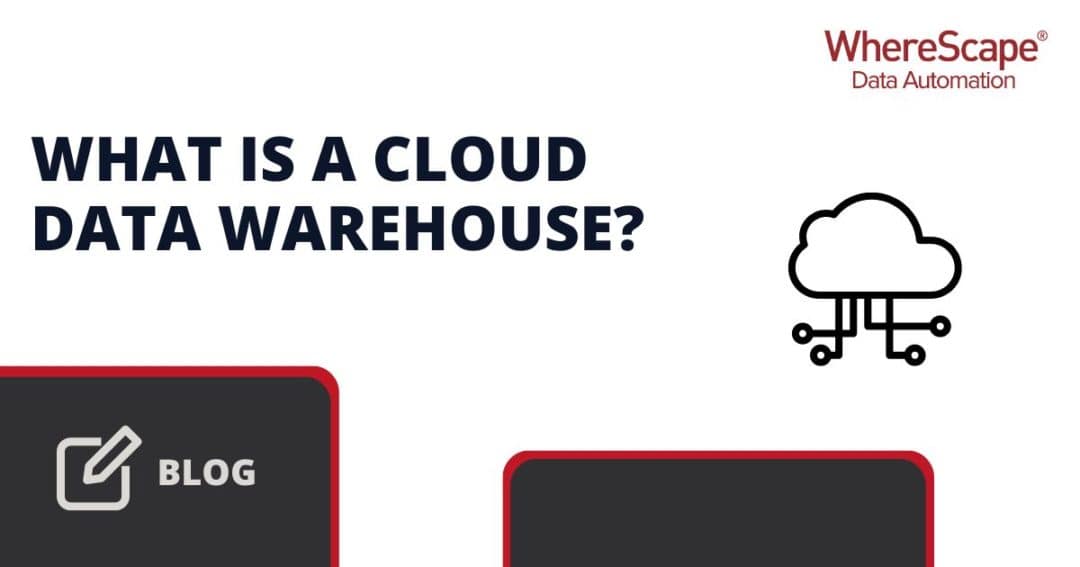
What is a Cloud Data Warehouse?
A cloud data warehouse is an advanced database service managed and hosted over the internet by a third-party cloud provider. Unlike traditional on-premises databases that require physical infrastructure and hands-on maintenance, cloud data warehouses offer a more...

Efficient Processing Techniques for JSON and Parquet Semi-Structured Data
Introduction to Semi-Structured Data and Its Importance Semi-structured data sits on the spectrum somewhere between traditional database tables and unstructured data. It has organizational properties that make it easier to analyze than raw text, but it doesn’t fit...
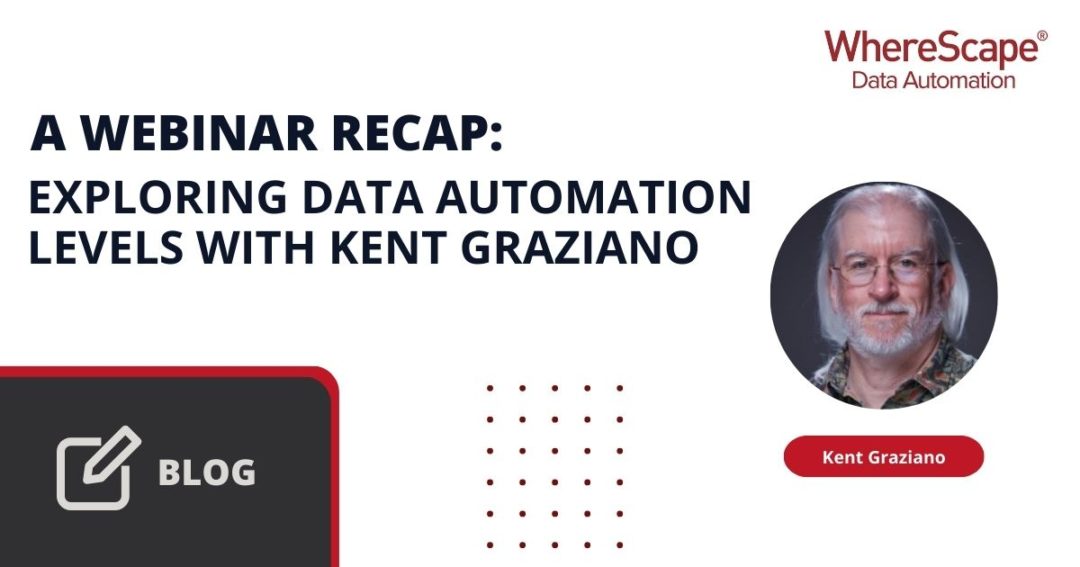
A Webinar Recap: Exploring Data Automation Levels with Kent Graziano
Our most recent webinar, "The Future of Data Warehousing: Understanding Automation Levels," hosted by Patrick O'Halloran, Solutions Architect, and esteemed guest speaker Kent Graziano dove into the transformative world of data warehouse automation. They discussed its...
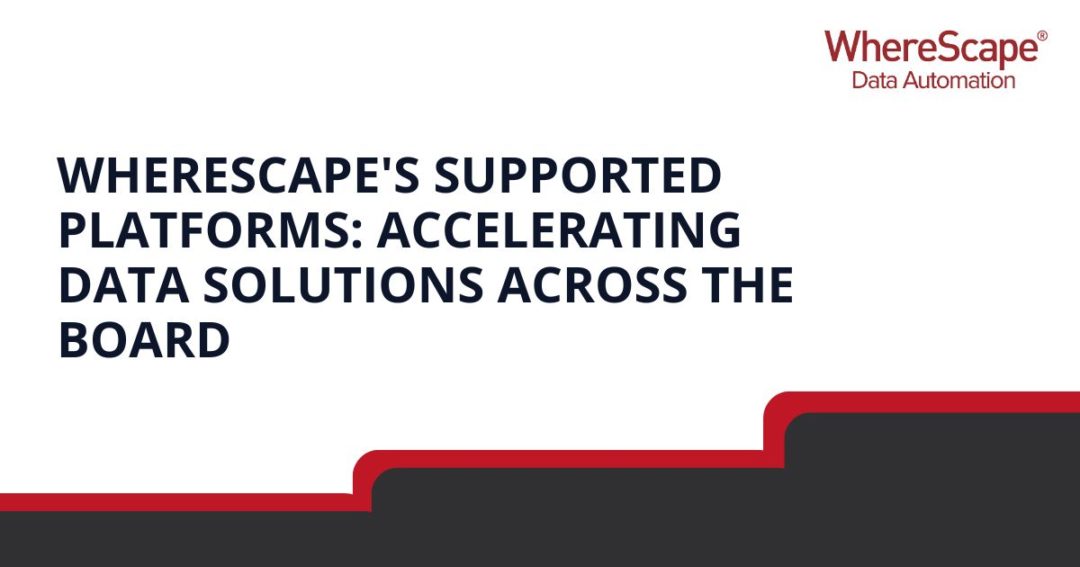
WhereScape’s Supported Platforms: Accelerating Data Solutions Across the Board
The Future of Data Warehouse Automation with WhereScape Data warehouse automation represents a transformative shift in how businesses manage and utilize their data. WhereScape is at the forefront of this movement, offering tools that automate code generation,...

